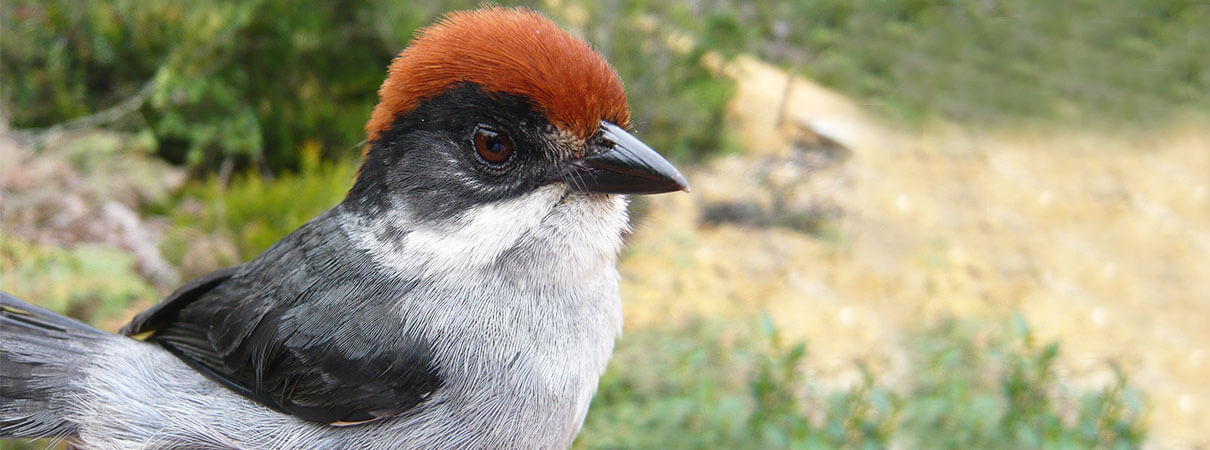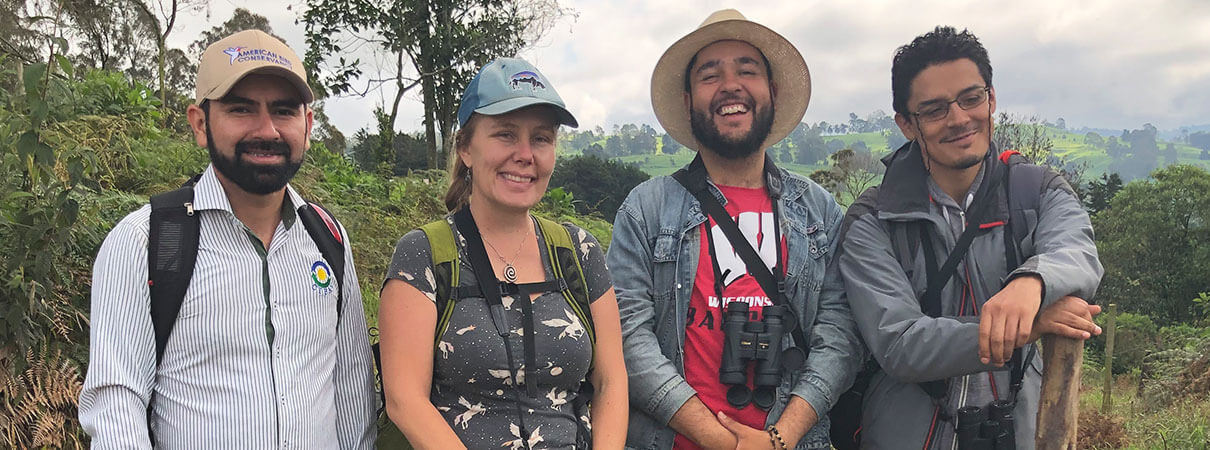We Can't Lose the Just-Found Antioquia Brushfinch
I am blessed to earn a living investing mental energy to tackle complex bird conservation issues — while working with extraordinarily passionate conservationists in five Latin American countries (Bolivia, Chile, Colombia, Ecuador, and Jamaica). My job brings me to far-flung locales to better understand threats faced by some of the world's rarest birds. I've endured a treacherous horseback ride to a páramo ecosystem for flowerpiercers, surveyed macaws from Bolivian sandstone cliffs, and searched for rare antpittas in seasonally flooded Amazonian forests. Sometimes the settings are less dramatic, though no less important.
In December 2018, Daniel Lebbin, ABC's Vice President of Threatened Species; Colombian conservationists Sergio Chaparro, Adolfo Correo, and Jhon Jairo Lopera; and I found ourselves trekking outside of a bucolic dairy town an hour from sprawling Medellín, Colombia.

Antioquia Brushfinch. Photo by Sergio Chaparro.
Ours was a top-secret mission. We were being escorted to a cattle pasture that contained a small patch of remnant low vegetation sheltering a bird species unseen by the scientific community in over 40 years. The “lost bird” we hoped to see was the Antioquia Brushfinch, a rusty-crowned, black, gray, and white songbird. Before publication of the rediscovery and with ABC support, Sergio and his team were conducting on-the-ground searches to find as many individual brushfinches as possible, to help ABC determine remaining strongholds and conservation priority actions for this species in the only region where it occurs.
As we stood on an empty gravel farm road, a brushfinch suddenly appeared, perching in a bush. Less than 30 seconds later, a second bird joined…likely its mate! Our group reverted to elementary school-style giddiness. I looked over at Dan. I will never forget the ear-to-ear grin of satisfaction on his glowing face; the euphoria was contagious. At that moment, I thought of a quote by ornithologist and seabird expert Robert Cushman Murphy: “I now belong to a higher cult of mortals, for I have seen the Albatross.”
Rodolfo explained to us that we were probably the eighth and ninth people to have laid eyes on the Antioquia Brushfinch since its rediscovery last year. Having just seen one of the most imperiled birds in the Americas, our jubilation was tempered by a nagging sense of urgency.

Left to right: Jhon Jairo, Wendy Willis, Rodolfo Correa Peña, and Sergio Chaparro-Herrera. Photo by Dan Lebbin.
To date, Sergio's research crew has documented 11 Antioquia Brushfinches, the only confirmed individuals in the entire world. They may not last. Since the day we visited, the habitat where Dan and I first laid eyes on the two magnificent brushfinches has been leveled for bean and corn production.
If only a few known individuals of an imperiled species remain, we should never look away and give up hope. If our partner Fundación Jocotoco had done that, the Pale-headed Brushfinch would be extinct. Instead, it's rebounding in the only country where it's found, Ecuador. In not-too-distant Colombia, in an ocean of golf-course-green dairy production grass, we now urgently need to protect and connect remaining habitat parcels to ensure the Antioquia Brushfinch's survival. ABC and our partners are working to create the first reserve for this species. Your support will help us protect this and other once-“lost” birds.
ABC is grateful to Mark Greenfield for support of our efforts to protect the Antioquia Brushfinch.
 | Wendy Willis is ABC's Deputy Director of International Programs. |


















































